Two Months With: The Huawei TalkBand B2
by Ian Cutress on May 11, 2016 4:00 PM EST- Posted in
- Huawei
- Wearables
- TalkBand B2
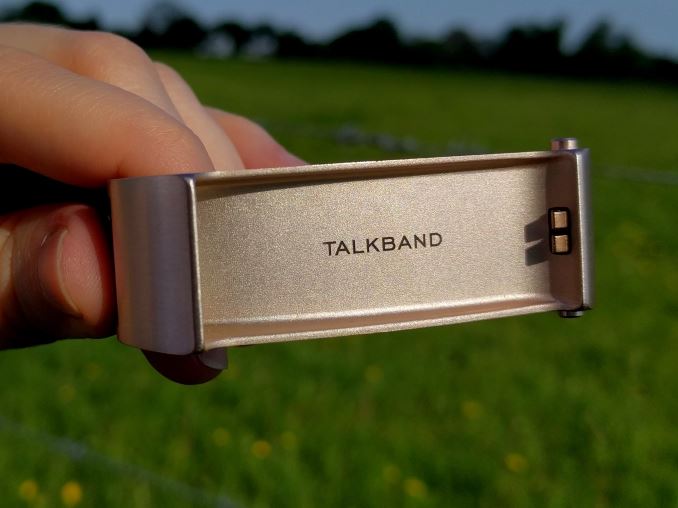
As part of the test with the Huawei Mate S, I also decided to use Huawei’s TalkBand B2 wearable which I got at the end of a press event. I have been using it for a good couple of months or more, from just before MWC. Along with the smartwatch, there is the Huawei Fit app required to digest the data it tracks.
Having never used a smartwatch-like device before, and not being enthusiastic about wearing one, I bit the bullet to at least experience it. I’ve come out the other end not completely changed, and the TalkBand B2 has a list of issues that need solving, but I have softened my opinion to smartwatches as a result.
So, the TalkBand B2: it shows the time/date, steps, calories, time slept, time biked and you can start then stop a ‘run-mode’ with it.
The display is a basic black and white affair, but sharp enough for almost all the detail you need to see on it. It’s called a TalkBand, and this means that via Bluetooth you can receive calls and minor notifications on it. The notification pop-up is not as advanced as you might think - merely showing what app or name is causing the notification, rather than any details. This is useful if the user wants to keep an eye on a certain app (I tend to keep it linked to WhatsApp and Twitter which I use several times a day, but not Skype because that is always going off).
Taking calls on the TalkBand B2 is a little odd, and I have not had much success with it. The band will vibrate as someone calls (useful when the phone needs to be silent), but then I will go find my phone to answer it forgetting that I can answer and talk on the watch. So I answer the phone, but the setup is such that it will only accept voice from the band and not the smartphone, meaning I sound muffled as I do not realize that I’m supposed to talk into the watch. Even then, because audio going in and coming out of the smartwatch is usually loud, you can’t really have a private conversation. I don’t think I’m sold on taking calls on a watch just yet.
The screen has a feature that turns itself on when it detects movement that mimics looking at a watch on your wrist. Do the motion repeatedly and it will go through the different screens on the display. However, it has a few flaws. Firstly, the flick wrist motion to see the time only seems to work about 40% of the time. Then, in broad daylight, the display is nowhere near bright enough to even see anything. But, at night, when you want the device to monitor sleep patterns, any time you turn over it turns on the display which is way too bright, either blinding yourself or a significant other at 3am. It’s not great.
On the monitoring aspects of the device, I feel that the step counter is not that great. It recorded over 66000 steps and 45 km during Mobile World Congress, but it also detected 500 steps when I was packing my suitcase the day we left. This makes me think that a step counter is better suited for the ankle perhaps. An interesting thing is the cycling detection: while at the gym on the treadmill, I will sometimes rest my hands in front of me on the heart-rate monitors while jogging/walking in a down period, but then my steps do not count and because of the arm position. As a result, the TalkBand thinks I’m cycling. So in a 45-minute run, it will detect running for 25-30 minutes and cycling for 10-15, which isn’t true, and messes up the calorie calculations. A better way perhaps to do this is via the user indicating a cycle time, similar to enabling the start of a run.
The sleep monitor works when the watch is worn in bed. The thing is, if the feature that shows the display when you rotate your wrist is enabled, the screen is far too bright at night. When not being blinded by the light, the TalkBand has a feature where during a 30-minute ‘alarm’ period set by the user (say 6:00-6:30am). If it detects the user in a light sleep mode it will vibrate to wake the person without the need for an alarm. This means that the user won’t wake from a heavy sleep, feel fresher, and it won’t wake their significant other. The downside of this is that if you are never in a light sleep during that period, the smartwatch won’t go off. That’s assuming the TalkBand has any battery left (see later). But a final word on the sleep monitor: sometimes when you take the watch off (either for comfort or to charge), it sometimes detects the lack of movement as a sleep pattern. So despite wearing it all day, if I’ve taken the watch off at some point to do the washing up, it might tell me that I slept for a couple of hours in the afternoon (which I definitely did not do).
The TalkBand B2 is a detachable module from the wristband, allowing for configurable straps. In this instance, I used the one supplied - a leather band in a silver backing. The device is easy enough to remove, and small enough to lose if you aren't too careful. On the rear is the charging port and what looks like the speaker which uses the internal open space in the wristband as an echo chamber to amplify the sound.
On the battery, this is going to be a pain point for anyone using the TalkBand B2. In order to charge it, the unit has to be removed from the clasp and the micro-USB port on the bottom used, meaning that the device cannot be used while charging (which takes around 30 mins for a full charge). For the most part, it lasts two days on a full charge. It uses more when you are exercising, up to 10% per hour, but the two days per charge means that I was always destined to either go to bed, or to the gym, on 2% battery. Even a small 15-minute window to charge it can give it enough juice for most of the day. During some of the time that I tested the device, I remembered to charge it while I was in the shower. But to put this into real world context, in March, I forgot to charge it about 20% of the time meaning it lacked sleep data collection, or for several days during April I forgot to charge it and wear it overnight.
On the data collection, the screen shots here pretty much sums it all up, telling the user how much sleep and how many steps. It is up to the user to decide what to do with the data, and I’m not sure how much might be being uploaded to a personal account. If you are trying to maintain a regular exercise and sleep schedule, it gives rough metrics that can be interpreted on whatever side your confirmation bias ends up on, but at the end of the day the only thing that makes this data collection useful is if it provides recommendations, and the TalkBand and Huawei Wear app currently do not do that. Actually, I’ll adjust that statement: if it detects you are sitting down for more than an hour, it will vibrate to tell you to stand up. Somewhat annoying when watching a film or on a long haul flight, and the time gap is not adjustable.
At the end of the day, I am glad I’ve tried the TalkBand B2. It’s not the best device for me, because of the brightness (especially at night-time) and the battery life really puts a dampener on the user experience, but it comes in a lot cheaper than the Android, watchOS or Tizen-based devices if you absolutely need a screen. If another smartwatch ever floats my way, I’ll see how that compares to this one.





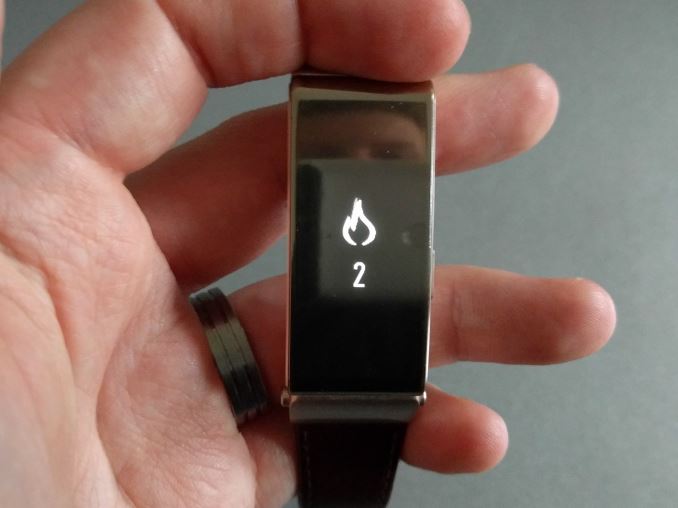

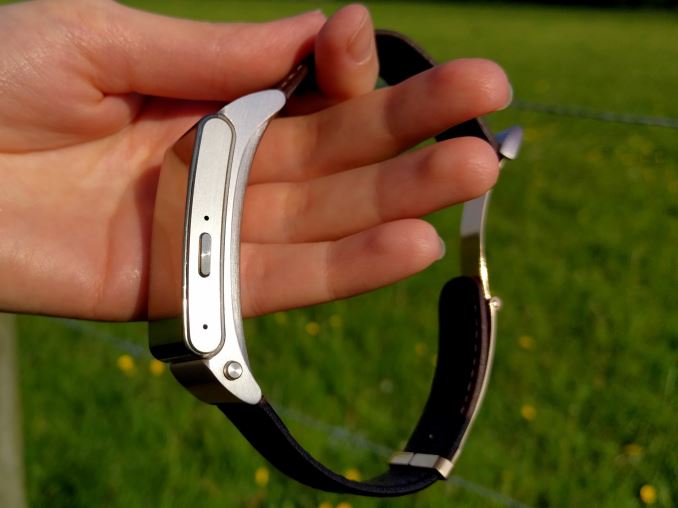

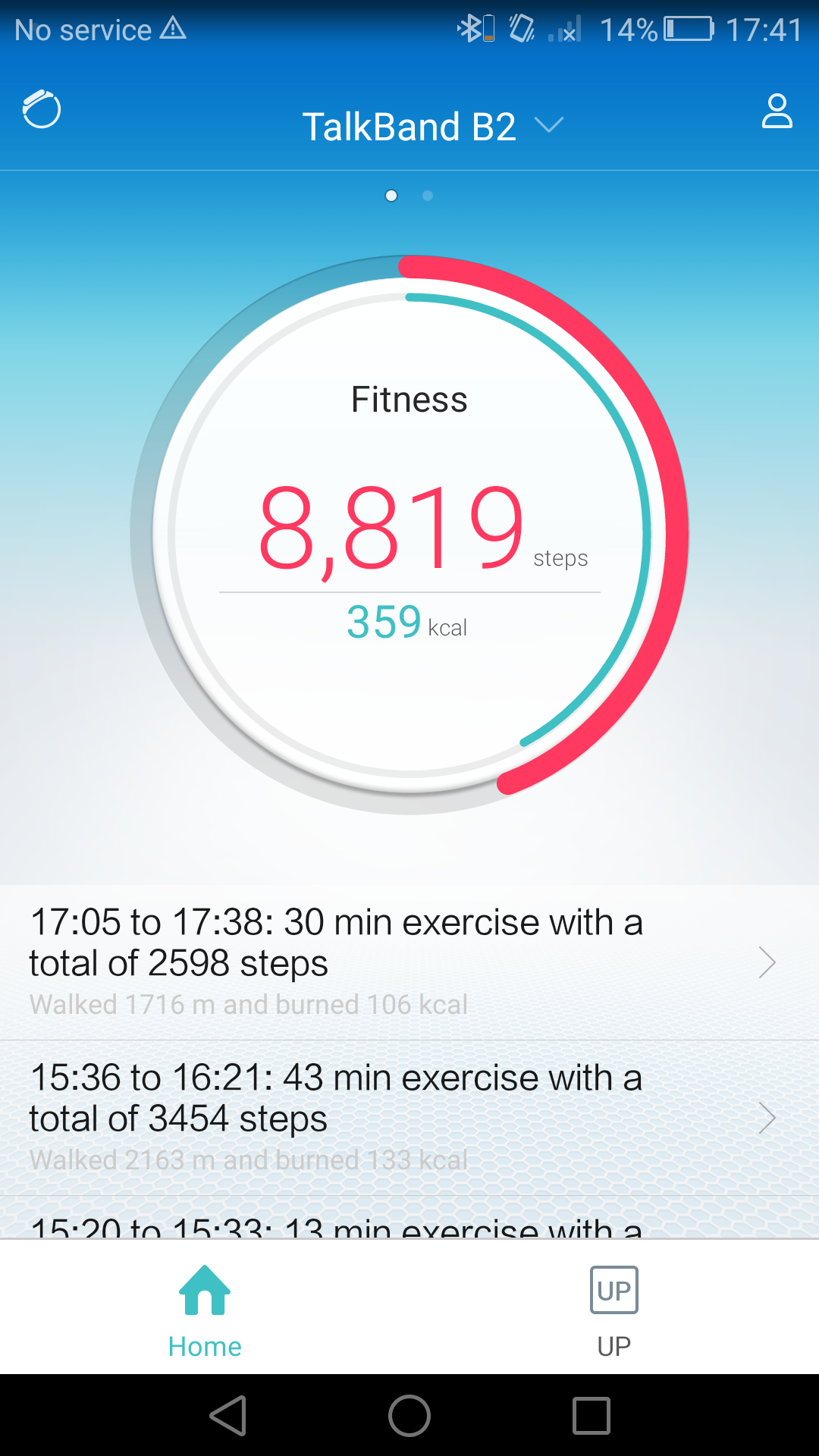

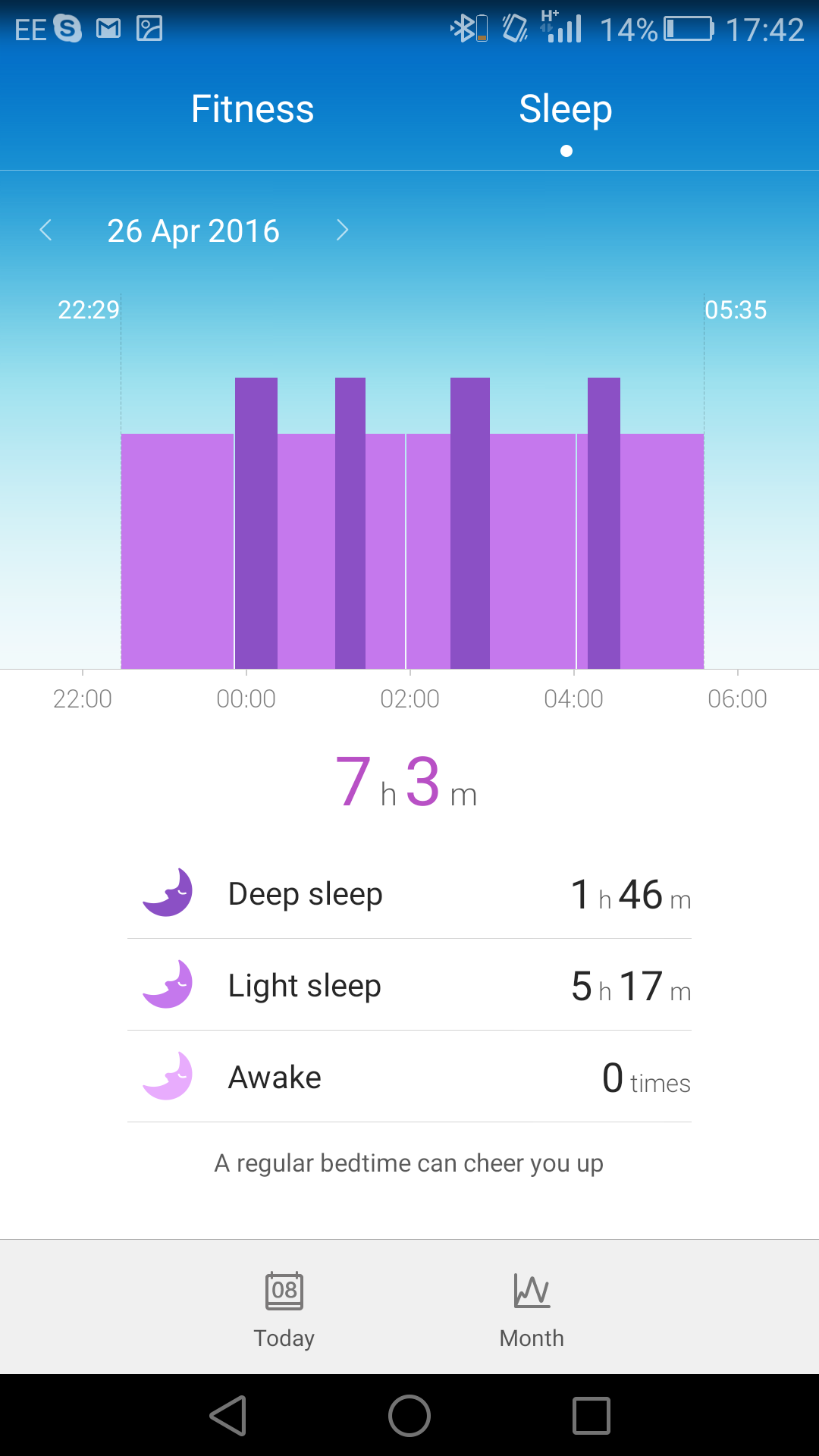
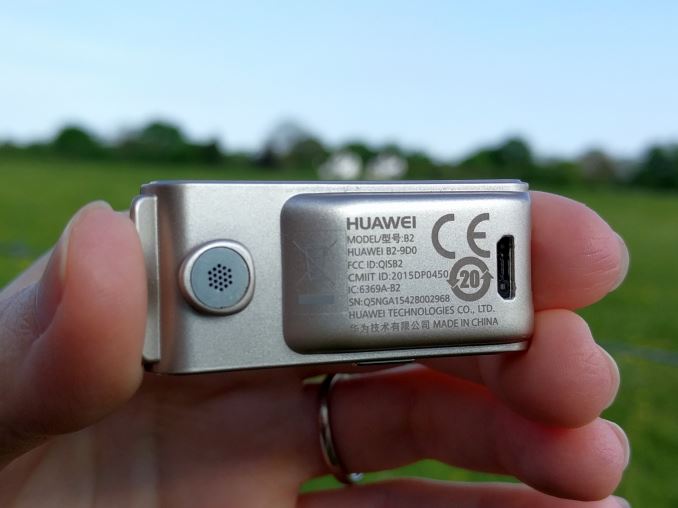

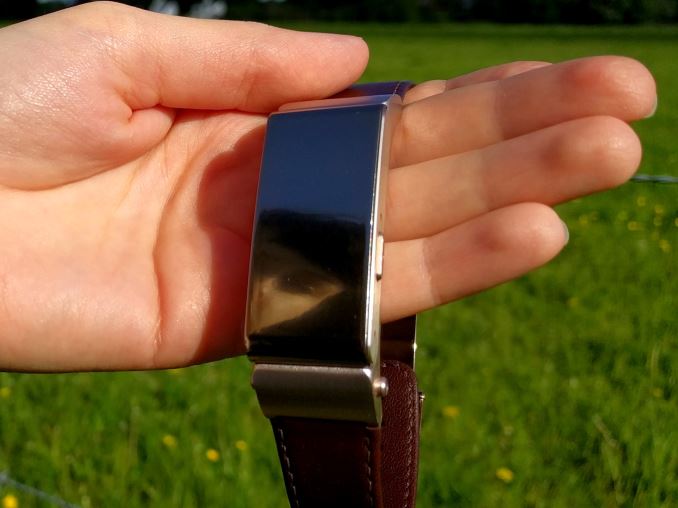














29 Comments
View All Comments
shadarlo - Wednesday, May 11, 2016 - link
I've only ever used the MiBand and I found it neat but fairly useless overall. Like you said, the data was interesting... but it lacked anything to make the data useful.The pro's of the MiBand however, are gigantic, compared to any other wearable I've seen. First and foremost, it's $15! Cheaper than a meal out.
It has a ~30 day battery life. It is water proof. It has a very cheaply replaceable wrist strap ($1) that is actually very comfortable as well and doesn't get stinky. It is accurate (to itself anyhow) for steps and sleep and because you never really have to take it off (30 day battery life) it rarely misses anything.
It has no screen, just 3 dots that can indicate stuff... but I personally don't wear watches anyhow so I don't care if it has a screen.
The best features it had were in regards to Android. It can act as an authorized device and can auto-unlock your phone when the phone is in close proximity to it. That's cool. It can also act as a notification system, buzzing for notifications you set for it to alert you to on the phone and not to others you don't want.
It's also a great alarm clock since it's always on you and the buzz is quite strong, so it never failed to wake me. It has that same 30 minute feature.... but I found it just always woke me up 30 minutes early, even if I was in heavy sleep... so no luck there. I wish I could have tweaked that feature more to make it work for me. But oh well.
Murloc - Wednesday, May 11, 2016 - link
if you're trying to lose weight you have to know how many calories you actually use. So the data isn't useless if it's processed by a useful app, so that you can get your calorie consumption out of it.Ian Cutress - Wednesday, May 11, 2016 - link
I've got the MiBand, not used it though. The proprietary charging cable/connection seems like something I would lose instantly.shadarlo - Thursday, May 12, 2016 - link
I just left it next to my 4 plug usb charger and each month (the battery actually lasted me closer to 35+ days) I'd charge it for 1 hour after I got home from the gym and planned to veg on the couch for TV show. When the show was over, I'd go and unplug it and put it back on and leave it there until the next month when I needed it.I can't say enough for that 30+ day charge... it's a game changer. I wish none of these fitness devices had screens and instead had dramatically longer battery life. You need a phone sized screen to really analyze the data anyhow.
HarberCandelario - Friday, November 6, 2020 - link
I can use whatsapp features on this device. This is the GB Whatsapp version I am using: https://otherwhatsapp.com/Novage - Wednesday, May 11, 2016 - link
There is the B3 nowHomeworldFound - Wednesday, May 11, 2016 - link
I wonder what kind of backdoors were inserted into this thing before it was shipped.MrSpadge - Thursday, May 12, 2016 - link
Ask the NSA, they should know.BrokenCrayons - Thursday, May 12, 2016 - link
Or ask Google. They probably have it all on file so they can figure out what sorts of adverts to toss at you.Murloc - Wednesday, May 11, 2016 - link
wristband data is useless per-se, but it's useful to know how many calories you consume if you want to put your caloric intake under control.Having something that measures steps and heartrate paired with a good app can help have more accurate estimates.
For healthy people all of this is useless of course.